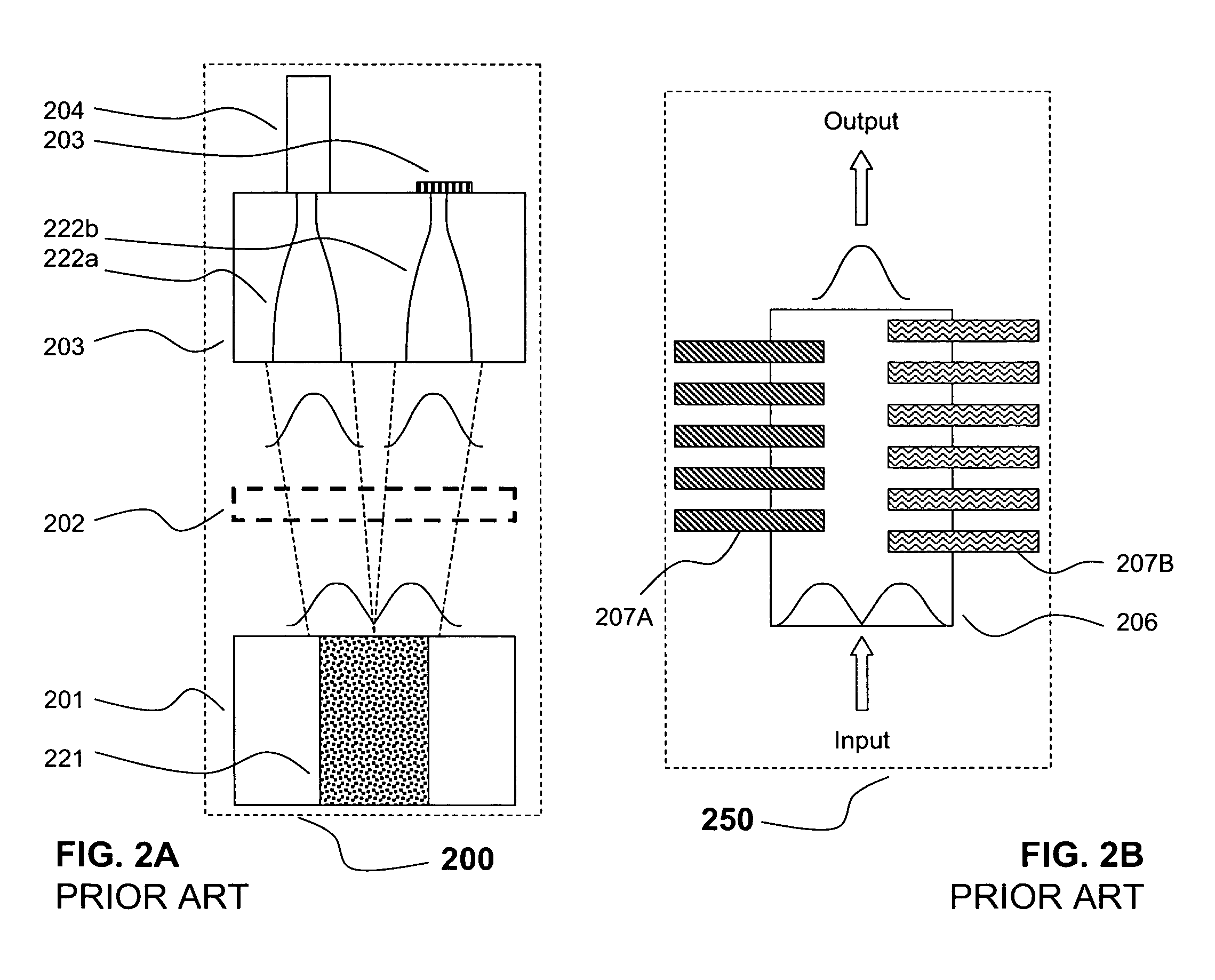Integrated lateral mode converter
a technology of integrated circuits and lateral modes, applied in the field of optical integrated circuits based on photonic integrated circuits, can solve the problems of cost barriers, lowering the overall cost of ownership, and continuing downward pressure on the core optoelectronic componentry
- Summary
- Abstract
- Description
- Claims
- Application Information
AI Technical Summary
Benefits of technology
Problems solved by technology
Method used
Image
Examples
Embodiment Construction
[0026]Referring to FIG. 1 a mode converter is schematically shown as a flow diagram 100 wherein an optical element operates in a higher order mode of operation 110 which should be coupled to a fundamental mode output 130 for satisfactory coupling to subsequent optical elements. Accordingly the flow diagram 100 shows an intermediate operation of a mode converter 120 providing this functional shift in operation of the overall optical assembly. Referring to schematic diagram 150 this flow diagram 100 is depicted schematically as discrete functional elements. Accordingly, the higher order mode of operation 110 is depicted by laser element 114 and consists of laser stripe 111 with grating structure 112 and operating in higher order mode 113.
[0027]This higher order mode 113 becomes input field 122 of modal converter 124, representing mode converter 120, which adiabatically couples for lowest insertion loss to a first fundamental mode 123 of the modal converter 124. This first fundamental ...
PUM
 Login to View More
Login to View More Abstract
Description
Claims
Application Information
 Login to View More
Login to View More - R&D
- Intellectual Property
- Life Sciences
- Materials
- Tech Scout
- Unparalleled Data Quality
- Higher Quality Content
- 60% Fewer Hallucinations
Browse by: Latest US Patents, China's latest patents, Technical Efficacy Thesaurus, Application Domain, Technology Topic, Popular Technical Reports.
© 2025 PatSnap. All rights reserved.Legal|Privacy policy|Modern Slavery Act Transparency Statement|Sitemap|About US| Contact US: help@patsnap.com



